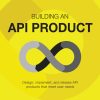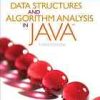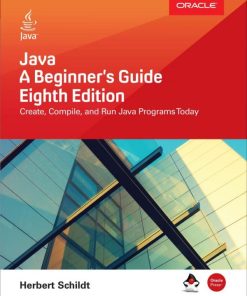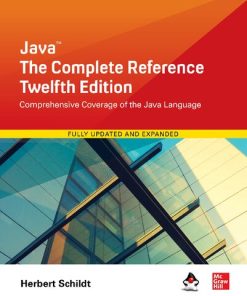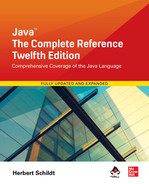(EBook PDF) Java The Complete Reference Complete Reference Series 13th Edition by Herbert Schildt, Danny Coward 1265062706 9781265062705 full chapters
$50.00 Original price was: $50.00.$25.00Current price is: $25.00.
Java: The Complete Reference (Complete Reference Series) 13th Edition by Herbert Schildt, Danny Coward- Ebook PDF Instant Download/DeliveryISBN: 1265062706, 9781265062705
Full download Java: The Complete Reference (Complete Reference Series) 13th Edition after payment.
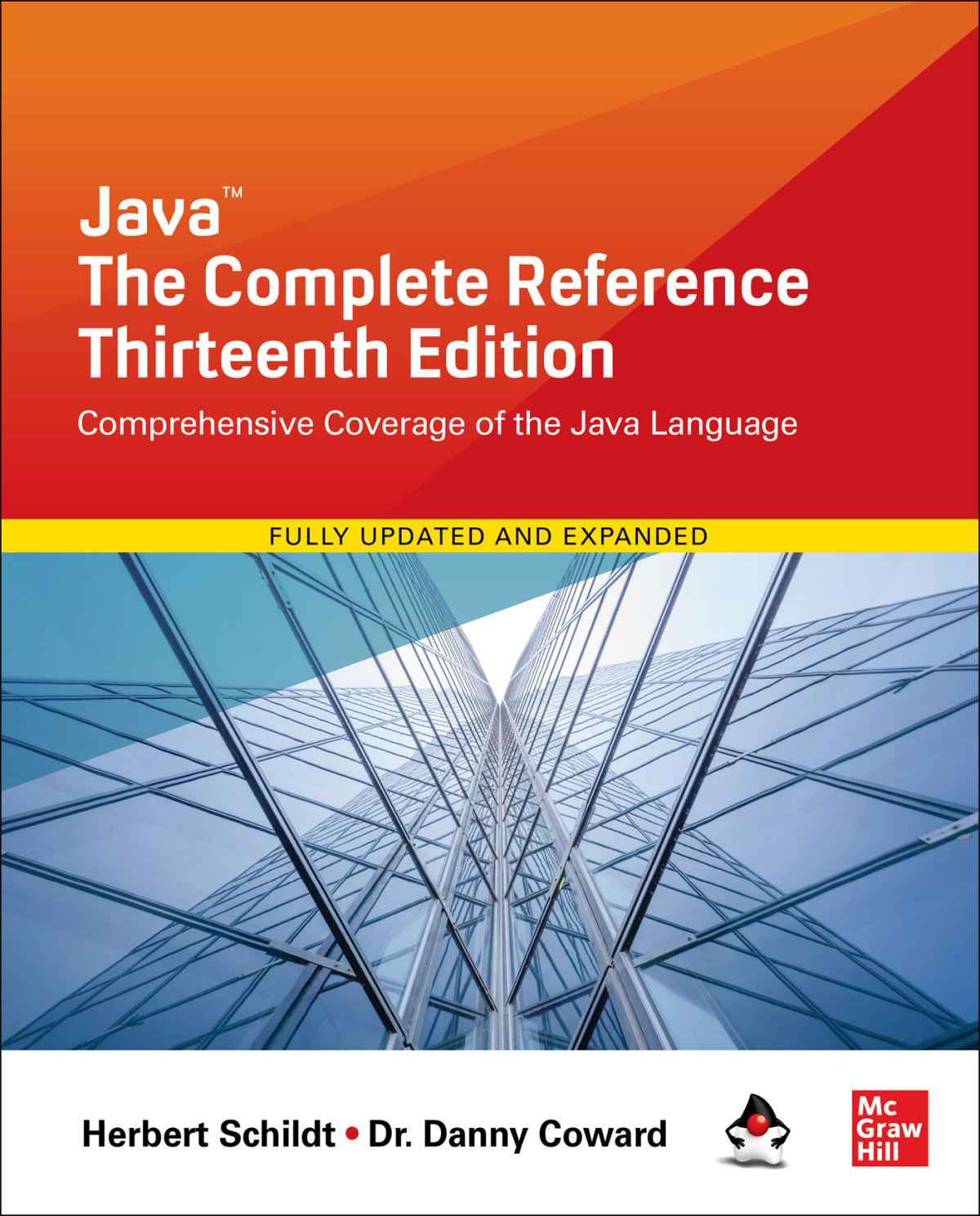
Product details:
ISBN-10 : 1265062706
ISBN-13 : 9781265062705
Author: Herbert Schildt, Danny Coward
The definitive guide to Java programming—thoroughly revised for Java SE 21 Fully updated for the current version of Java, Java SE 21, this comprehensive guide shows, step by step, how to design, write, debug, run, and administer high-performance Java programs. Inside, bestselling author Herbert Schildt and programming expert Dr. Danny Coward cover the entire Java language, including its syntax, keywords, and libraries. The book lays out cutting-edge development techniques and best practices. Java: The Complete Reference, Thirteenth Edition features clear explanations, detailed code samples, and real-world examples that demonstrate how Java can be put to work in the real world. JavaBeans, servlets, applets, Swing, lambda expressions, multithreading, and the default interface method are thoroughly discussed. You will get full details on all of the latest features and changes in JDK 18 through long-term support (LTS) release JDK 21. Designed for novice, intermediate, and professional programmers alike Source code for all examples and projects are available for download Written in the clear, uncompromising style Herb Schildt is famous for
Java: The Complete Reference (Complete Reference Series) 13th Table of contents:
Part I The Java Language
Chapter 1 The History and Evolution of Java
Java’s Lineage
The Birth of Modern Programming: C
C++: The Next Step
The Stage Is Set for Java
The Creation of Java
The C# Connection
Longevity
How Java Impacted the Internet
Java Applets
Security
Portability
Java’s Magic: The Bytecode
Moving Beyond Applets
A Faster Release Schedule
Servlets: Java on the Server Side
The Java Buzzwords
Simple
Object-Oriented
Robust
Multithreaded
Architecture-Neutral
Interpreted and High Performance
Distributed
Dynamic
The Evolution of Java
A Culture of Innovation
Chapter 2 An Overview of Java
Object-Oriented Programming
Two Paradigms
Abstraction
The Three OOP Principles
A First Simple Program
Entering the Program
Compiling the Program
A Closer Look at the First Sample Program
A Second Short Program
Two Control Statements
The if Statement
The for Loop
Using Blocks of Code
Lexical Issues
Whitespace
Identifiers
Literals
Comments
Separators
The Java Keywords
The Java Class Libraries
Chapter 3 Data Types, Variables, and Arrays
Java Is a Strongly Typed Language
The Primitive Types
Integers
byte
short
int
long
Floating-Point Types
float
double
Characters
Booleans
A Closer Look at Literals
Integer Literals
Floating-Point Literals
Boolean Literals
Character Literals
String Literals
Variables
Declaring a Variable
Dynamic Initialization
The Scope and Lifetime of Variables
Type Conversion and Casting
Java’s Automatic Conversions
Casting Incompatible Types
Automatic Type Promotion in Expressions
The Type Promotion Rules
Arrays
One-Dimensional Arrays
Multidimensional Arrays
Alternative Array Declaration Syntax
Introducing Type Inference with Local Variables
Some var Restrictions
A Few Words About Strings
Chapter 4 Operators
Arithmetic Operators
The Basic Arithmetic Operators
The Modulus Operator
Arithmetic Compound Assignment Operators
Increment and Decrement
The Bitwise Operators
The Bitwise Logical Operators
The Left Shift
The Right Shift
The Unsigned Right Shift
Bitwise Operator Compound Assignments
Relational Operators
Boolean Logical Operators
Short-Circuit Logical Operators
The Assignment Operator
The ? Operator
Operator Precedence
Using Parentheses
Chapter 5 Control Statements
Java’s Selection Statements
if
The Traditional switch
Iteration Statements
while
do-while
for
The For-Each Version of the for Loop
Local Variable Type Inference in a for Loop
Nested Loops
Jump Statements
Using break
Using continue
return
Chapter 6 Introducing Classes
Class Fundamentals
The General Form of a Class
A Simple Class
Declaring Objects
A Closer Look at new
Assigning Object Reference Variables
Introducing Methods
Adding a Method to the Box Class
Returning a Value
Adding a Method That Takes Parameters
Constructors
Parameterized Constructors
The this Keyword
Instance Variable Hiding
Garbage Collection
A Stack Class
Chapter 7 A Closer Look at Methods and Classes
Overloading Methods
Overloading Constructors
Using Objects as Parameters
A Closer Look at Argument Passing
Returning Objects
Recursion
Introducing Access Control
Understanding static
Introducing final
Arrays Revisited
Introducing Nested and Inner Classes
Exploring the String Class
Using Command-Line Arguments
Varargs: Variable-Length Arguments
Overloading Vararg Methods
Varargs and Ambiguity
Local Variable Type Inference with Reference Types
Chapter 8 Inheritance
Inheritance Basics
Member Access and Inheritance
A More Practical Example
A Superclass Variable Can Reference a Subclass Object
Using super
Using super to Call Superclass Constructors
A Second Use for super
Creating a Multilevel Hierarchy
When Constructors Are Executed
Method Overriding
Dynamic Method Dispatch
Why Overridden Methods?
Applying Method Overriding
Using Abstract Classes
Using final with Inheritance
Using final to Prevent Overriding
Using final to Prevent Inheritance
Local Variable Type Inference and Inheritance
The Object Class
Chapter 9 Packages and Interfaces
Packages
Defining a Package
Finding Packages and CLASSPATH
A Short Package Example
Packages and Member Access
An Access Example
Importing Packages
Interfaces
Defining an Interface
Implementing Interfaces
Nested Interfaces
Applying Interfaces
Variables in Interfaces
Interfaces Can Be Extended
Default Interface Methods
Default Method Fundamentals
A More Practical Example
Multiple Inheritance Issues
Use static Methods in an Interface
Private Interface Methods
Final Thoughts on Packages and Interfaces
Chapter 10 Exception Handling
Exception-Handling Fundamentals
Exception Types
Uncaught Exceptions
Using try and catch
Displaying a Description of an Exception
Multiple catch Clauses
Nested try Statements
throw
throws
finally
Java’s Built-in Exceptions
Creating Your Own Exception Subclasses
Chained Exceptions
Three Additional Exception Features
Using Exceptions
Chapter 11 Multithreaded Programming
The Java Thread Model
Thread Priorities
Synchronization
Messaging
The Thread Class and the Runnable Interface
The Main Thread
Creating a Thread
Implementing Runnable
Extending Thread
Choosing an Approach
Creating Multiple Threads
Using isAlive( ) and join( )
Thread Priorities
Synchronization
Using Synchronized Methods
The synchronized Statement
Interthread Communication
Deadlock
Suspending, Resuming, and Stopping Threads
Obtaining a Thread’s State
Using a Factory Method to Create and Start a Thread
Virtual Threads
Using Multithreading
Chapter 12 Enumerations, Autoboxing, and Annotations
Enumerations
Enumeration Fundamentals
The values( ) and valueOf( ) Methods
Java Enumerations Are Class Types
Enumerations Inherit Enum
Another Enumeration Example
Type Wrappers
Character
Boolean
The Numeric Type Wrappers
Autoboxing
Autoboxing and Methods
Autoboxing/Unboxing Occurs in Expressions
Autoboxing/Unboxing Boolean and Character Values
Autoboxing/Unboxing Helps Prevent Errors
A Word of Warning
Annotations
Annotation Basics
Specifying a Retention Policy
Obtaining Annotations at Run Time by Use of Reflection
The AnnotatedElement Interface
Using Default Values
Marker Annotations
Single-Member Annotations
The Built-In Annotations
Type Annotations
Repeating Annotations
Some Restrictions
Chapter 13 I/O, Try-with-Resources, and Other Topics
I/O Basics
Streams
Byte Streams and Character Streams
The Predefined Streams
Reading Console Input
Reading Characters
Reading Strings
Writing Console Output
The PrintWriter Class
Reading and Writing Files
Automatically Closing a File
The transient and volatile Modifiers
Introducing instanceof
strictfp
Native Methods
Using assert
Assertion Enabling and Disabling Options
Static Import
Invoking Overloaded Constructors Through this( )
A Word About Value-Based Classes
Chapter 14 Generics
What Are Generics?
A Simple Generics Example
Generics Work Only with Reference Types
Generic Types Differ Based on Their Type Arguments
How Generics Improve Type Safety
A Generic Class with Two Type Parameters
The General Form of a Generic Class
Bounded Types
Using Wildcard Arguments
Bounded Wildcards
Creating a Generic Method
Generic Constructors
Generic Interfaces
Raw Types and Legacy Code
Generic Class Hierarchies
Using a Generic Superclass
A Generic Subclass
Run-Time Type Comparisons Within a Generic Hierarchy
Casting
Overriding Methods in a Generic Class
Type Inference with Generics
Local Variable Type Inference and Generics
Erasure
Bridge Methods
Ambiguity Errors
Some Generic Restrictions
Type Parameters Can’t Be Instantiated
Restrictions on Static Members
Generic Array Restrictions
Generic Exception Restriction
Chapter 15 Lambda Expressions
Introducing Lambda Expressions
Lambda Expression Fundamentals
Functional Interfaces
Some Lambda Expression Examples
Block Lambda Expressions
Generic Functional Interfaces
Passing Lambda Expressions as Arguments
Lambda Expressions and Exceptions
Lambda Expressions and Variable Capture
Method References
Method References to static Methods
Method References to Instance Methods
Method References with Generics
Constructor References
Predefined Functional Interfaces
Chapter 16 Modules
Module Basics
A Simple Module Example
Compile and Run the First Module Example
A Closer Look at requires and exports
java.base and the Platform Modules
Legacy Code and the Unnamed Module
Exporting to a Specific Module
Using requires transitive
Use Services
Service and Service Provider Basics
The Service-Based Keywords
A Module-Based Service Example
Module Graphs
Three Specialized Module Features
Open Modules
The opens Statement
requires static
Introducing jlink and Module JAR Files
Linking Files in an Exploded Directory
Linking Modular JAR Files
JMOD Files
A Brief Word About Layers and Automatic Modules
Final Thoughts on Modules
Chapter 17 Switch Expressions, Records, and Other Recently Added Features
Records
Record Basics
Create Record Constructors
Another Record Constructor Example
Create Record Getter Methods
Pattern Matching with instanceof
Pattern Variables in a Logical AND Expression
Pattern Matching in Other Statements
Enhancements to switch
Use a List of case Constants
Introducing the switch Expression and the yield Statement
Introducing the Arrow in a case Statement
A Closer Look at the Arrow case
Another switch Expression Example
Pattern Matching in switch
Text Blocks
Text Block Fundamentals
Understanding Leading Whitespace
Use Double Quotes in a Text Block
Escape Sequences in Text Blocks
Pattern Matching with Records
Sealed Classes and Interfaces
Sealed Classes
Sealed Interfaces
Future Directions
Part II The Java Library
Chapter 18 String Handling
The String Constructors
String Length
Special String Operations
String Literals
String Concatenation
String Concatenation with Other Data Types
String Conversion and toString( )
People also search for Java: The Complete Reference (Complete Reference Series) 13th:
java the complete reference amazon
java the complete reference analysis
java the complete reference author
java the complete reference review
java the complete reference latest
Tags:
Java,Complete Reference,Herbert Schildt,Danny Coward
You may also like…
Computers - Programming
Java: A Beginner’s Guide 8th Edition Herbert 1260440222 9781260440225
Uncategorized
Uncategorized
Uncategorized
Computers - Programming


